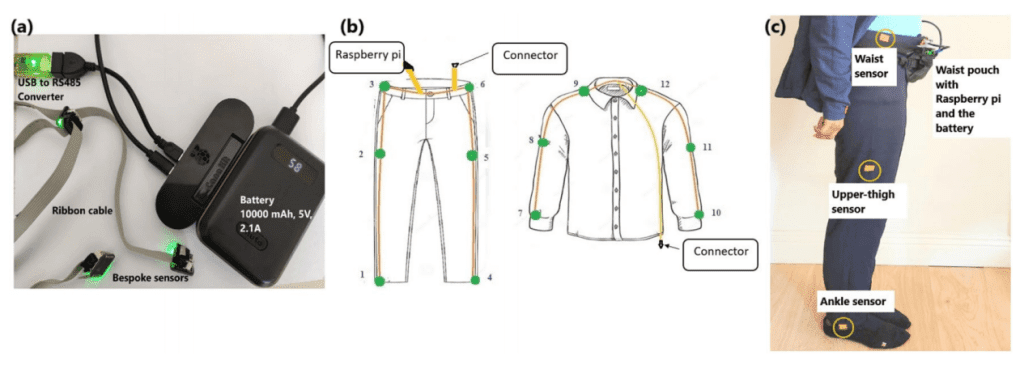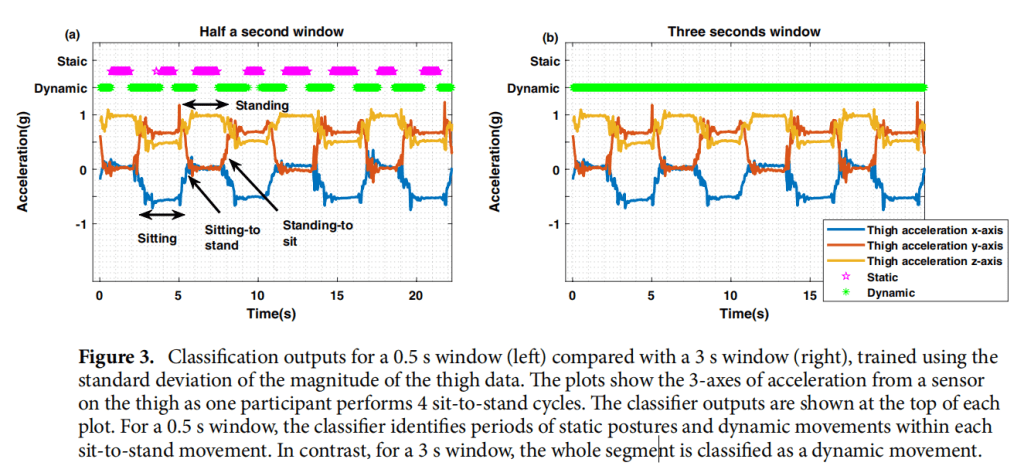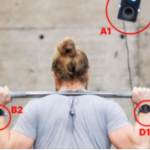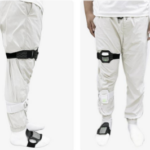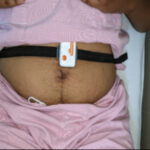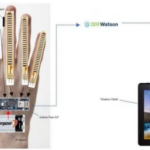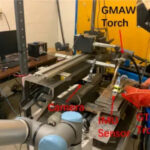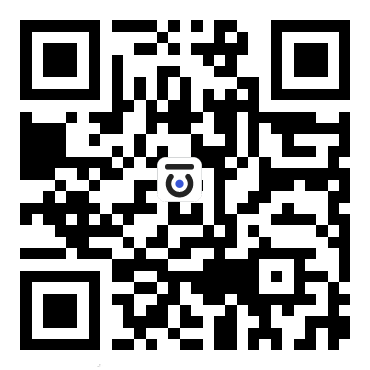Maintaining proper posture in daily life is effective in improving blood circulation and reducing the risk of chronic disease. In the rehabilitation setting, posture monitoring can help healthcare professionals assess the effectiveness of conditions and treatments to improve the physical condition of patients. In previous studies, IMUs were often required to be firmly fixed to a specific body part of the wearer, which is demanding and inconvenient to wear, and can be particularly tedious and laborious when multiple sensors need to be worn.
The Udeni Jayasinghe research team from the UK has designed an embedded sensing system consisting of 12 IMUs (inertial measurement units), which are processed so that the IMUs are neither exposed to the outside nor in contact with the skin, which allows the wearer to wear more comfortably and is easier to put on and take off, making it more suitable for daily use.
The system consists of 12 IMUs mounted in a garment, using a differential serial bus to form a "sensor string" and connected to a Raspberry pi for data storage. As shown in Figure C, the Raspberry pi and battery pack were placed in a pouch around the waist of each participant.
Five participants (3 males and 2 females) participated in this study. The participants wore IMU clothing for 4 days and were required to perform and videotape the following six pre-determined activities each day: ① standing still; ② sitting in a chair; ③ supine position; ④ sitting on the floor with legs stretched apart; ⑤ walking back and forth; and ⑥ walking up and down stairs. Then, they continued with the other activities of the day and kept an activity diary for recording.
To analyze the postures of the participants, the activities were classified into two categories: static postures (①②③④) and dynamic movements (⑤⑥). A classifier was set up to identify and classify the dynamic and static activities. After synchronizing the activity videos with the sensor data using ELAN software, Udeni Jayasinghe manually identified and annotated the start and end points of the activities manually, and then extracted these data segments for analysis.
In this experiment, instead of defining thresholds to distinguish static activities from dynamic activities as usual, three different features (standard deviation of the movement of the vertical axis of the "thigh" data, standard deviation of the movement of the "thigh" and "waist ") and five different window sizes (0.5s, 1s, 1.5s, 2s, 3s) to compare the accuracy of the classifier in distinguishing between the two types of activities.
A study of the confusion matrix revealed that the accuracy of pose recognition reached 100% for a given training dataset when the window values were 1.5s, 2s and 3s, so it can be concluded experimentally that the IMU sensor mounted on loose clothing can be successfully used for pose classification.
However, when the activity diary was used as the reference data and the classifier was used to identify other activities of the participants throughout the day, a significant decrease in accuracy was observed. Overall, however, this experiment demonstrates the feasibility of embedding IMU sensors in loose clothing for posture capture. The embedded solution is clearly more suitable for long time daily monitoring and posture recognition than the bulky wearable devices. It is believed that in the future, with the advancement of technology and improvement of algorithm, the recognition accuracy of embedded sensing system will be further improved and can be better used for posture recognition classification.

